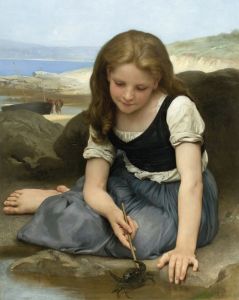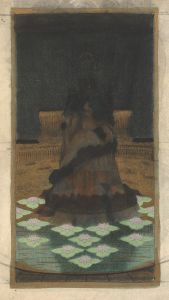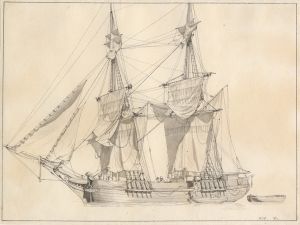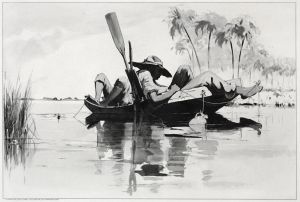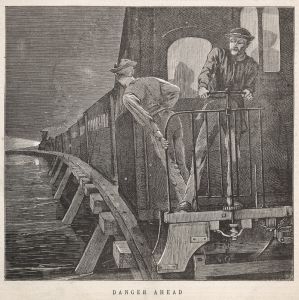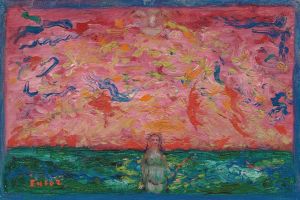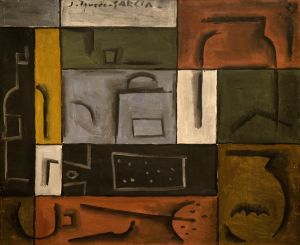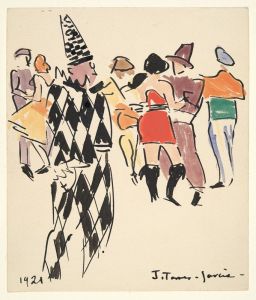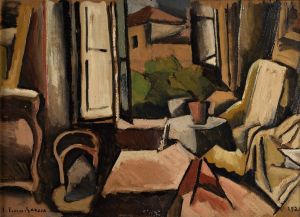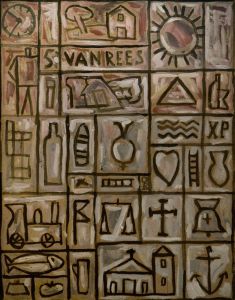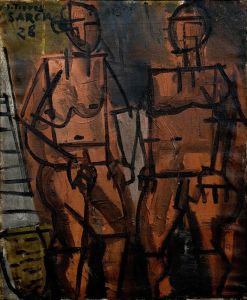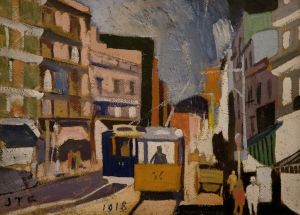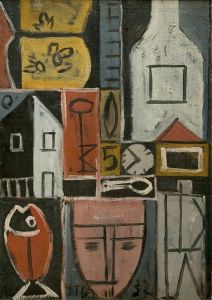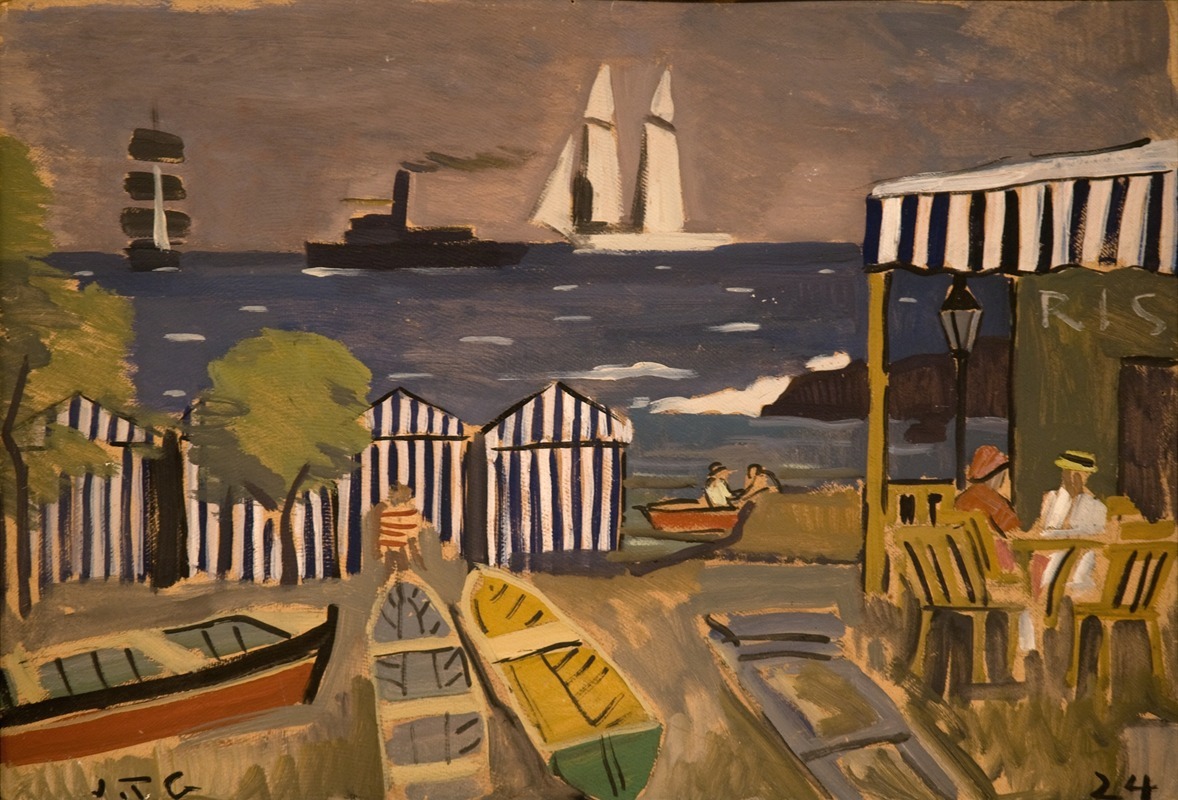
Paisaje de playa
A hand-painted replica of Joaquín Torres-García’s masterpiece Paisaje de playa, meticulously crafted by professional artists to capture the true essence of the original. Each piece is created with museum-quality canvas and rare mineral pigments, carefully painted by experienced artists with delicate brushstrokes and rich, layered colors to perfectly recreate the texture of the original artwork. Unlike machine-printed reproductions, this hand-painted version brings the painting to life, infused with the artist’s emotions and skill in every stroke. Whether for personal collection or home decoration, it instantly elevates the artistic atmosphere of any space.
Joaquín Torres-García was a prominent Uruguayan artist known for his contributions to modern art and his role in the development of Constructivism in Latin America. Born in Montevideo in 1874, Torres-García spent much of his early career in Europe, where he was influenced by various avant-garde movements. His work often reflects a synthesis of different artistic styles, including Cubism, Surrealism, and Neoplasticism, and he is celebrated for his unique approach to abstraction and symbolism.
"Paisaje de playa" (Beach Landscape) is one of Torres-García's works that exemplifies his distinctive style. While specific details about this particular painting are limited, it is consistent with his broader body of work, which often features a grid-like structure and a symbolic language that combines elements of the natural world with geometric forms. Torres-García's paintings frequently explore themes of universal harmony and the relationship between humanity and the cosmos, using a visual language that he referred to as "Universal Constructivism."
Throughout his career, Torres-García sought to create a new artistic language that could transcend cultural and geographical boundaries. This ambition is evident in his use of a symbolic vocabulary that includes archetypal forms such as the sun, the moon, and the human figure, often arranged within a structured, grid-like composition. His work reflects a deep engagement with both the ancient and the modern, drawing inspiration from pre-Columbian art, European modernism, and his own philosophical inquiries.
In "Paisaje de playa," Torres-García likely employs his characteristic use of earthy tones and simplified forms to depict a coastal scene. His approach to landscape painting is not merely representational but rather an exploration of the underlying order and harmony of the natural world. By reducing the landscape to its essential forms and integrating them into a cohesive, abstract composition, Torres-García invites viewers to contemplate the interconnectedness of all things.
Torres-García's influence extends beyond his paintings; he was also an influential teacher and writer. Upon returning to Uruguay in 1934, he founded the "Taller Torres-García," an art school that became a hub for modernist thought and practice in Latin America. Through his teaching and writings, he disseminated his ideas about art and its role in society, advocating for an art that was both universal and deeply rooted in local culture.
"Paisaje de playa" can be seen as part of Torres-García's broader mission to create an art that speaks to both the individual and the collective, the local and the universal. His work continues to be celebrated for its innovative approach to form and content, and his legacy is evident in the continued relevance of his ideas and the enduring appeal of his art.
While specific information about "Paisaje de playa" may be limited, it is clear that the painting embodies the principles and themes that define Torres-García's oeuvre. Through his unique synthesis of abstraction and symbolism, Torres-García offers a vision of art as a means of understanding and expressing the fundamental truths of human experience.





